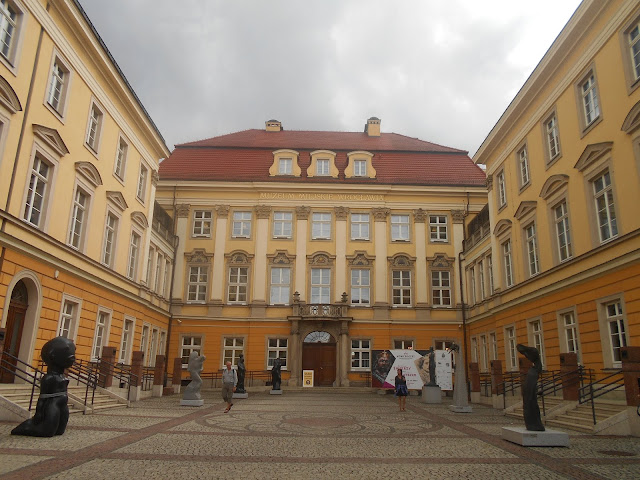From Mansion to Palace
The Royal Palace of Wroclaw (then called Breslau) was formerly called Spätgen’s Palace, named after Heinrich Gottfried von Spätgen, chancellor of Bishop Francis Louis of Neuburg. In 1717 Spätgen acquired the property, which was a modest baroque mansion back then. After his death in 1750, King Frederick II bought the mansion, making Breslau as a royal residence city alongside Berlin and Königsberg (present-day Kaliningrad). In fact, the palace became one of the official residences of the Prussian kings. Succeeding kings extended the property, changing its design and character to suit their tastes and the fashions of the era. By the turn of the 19th century, the palace already extended from Wolności Square to Kazimierza Wielkiego Street.
With the downfall of the Hohenzollerns, the palace was donated to the local government of Breslau, which reserved the use of the palace for exhibition purposes. On September 20, 1926, the Palace Museum (Schlossmuseum) was opened with an exhibition dedicated glory days of Frederick II the Great on the right side of the south wing. Also showcased were glass and pottery as well as iron casts, which Silesia is known for. Upstairs, the interiors from the baroque, rococo and classicistic periods were restored and the rooms paintings and sculptures from the Albrecht Säbisch collection also filled the palace rooms.
The palace was heavily damaged at the end of World War II. Only Spätgen’s Palace with the north wings and a fragment of the south wing were preserve; the rest of the palace was demolished in the 1960s. by this time, Breslau was renamed Wroclaw. From 1963 until 1999, the palace was home of the Archaeological Museum and, until 2004, Ethnographic Museum.
From Palace to History Museum
The Royal Palace of Wroclaw has been converted into two museums: the Historical Museum and the Museum of Medallic Art. The restored palace chambers—including the baroque room with the walls covered with Delft ceramics—is now home to the Historical Museum. The Historical Museum maintains objects of historical and artistic value related to Wroclaw. The collections include iconographic items, graphics, drawings and photographs. A collection illustrating the history of Wroclaw theatres is the unique one. The rich collection of the museum are displayed in the permanent exhibition “1000 Years of Wroclaw,” and also in a number of changing exhibits. Aside from these, the museum also hosts various cultural programs, scientific gatherings, and lectures.
The palace’s ground floor serves as the reception area where guests could wander around and enjoy souvenir shopping. Excited much, I decided on an impulse to buy postcards, each sold for 10 zloty each. The elevator leads to the palace’s second and third floor, where the exhibits are displayed.
The palace’s second floor opens up to the Royal Apartments, carefully restored back to their former glory. The first room is the Rococo room of King Frederick II, which showcases the king’s taste for French art and culture. The green and red rooms are dedicated to the reign of his nephew and successor, King Frederick William III. During the last renovation, four niches with shell-bands ornaments were discovered. Among the most admirable objects displayed here include the set of Biedermeir furniture and the cylindrical faience oven.
Much history transpired in the Yellow Room. In 1813, Frederick William III sought refuge in Breslau. In the Yellow Room, the fate of the Prussia was sealed since here, the king signed his famous manifestos,”To my People,” and “To My Army.” In 1913, the iconic Centennial Hall was built in commemoration of the first manifesto. The Blue Room is also laid with objects remembering King Frederick William III, particularly relating to his army.
How to Visit the Royal Palace of Wroclaw?
The Palace is located at Kazimierza Wielkiego. It is open from 10 am until 5 pm, Tuesday until Friday, and from 10 am until 6 pm, every Saturday and Sunday. Permanent exhibitions are free of charge. For more details, visit the official website.









.png)





0 Comments